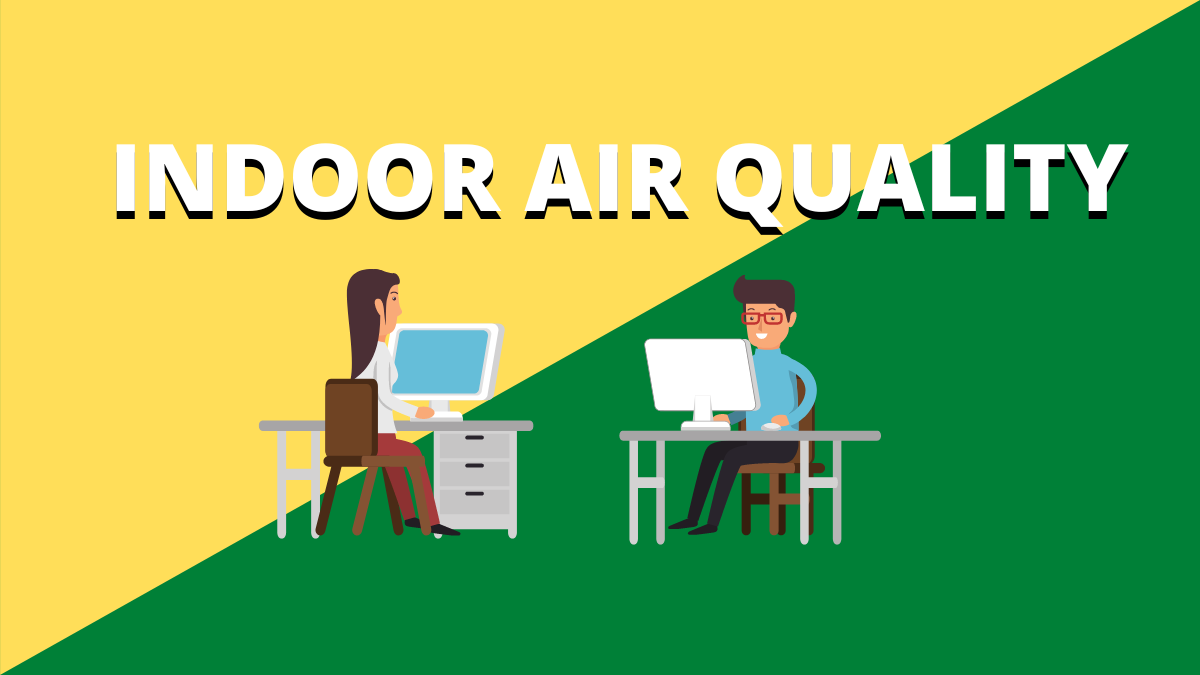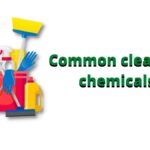Indoor air quality (IAQ) is the air quality within and around buildings and structures. IAQ affects building occupants’ health, comfort, and well-being. Indoor air pollution is constantly ranked as one of the five environmental dangers to public health. Indoor air quality tends to worsen in the winter because there is frequently no glide of clean air from the outside, which means allergens remain trapped inside; the only solution is to let the sparkling air in. Even in winter, open home windows from time to time to permit sparkling air to go into the house. Also, using air contaminants in the kitchen is recommended to remove cooking fumes.
Many elements affect IAQ. These elements include lousy airflow (lack of outdoor air), issues controlling temperature, excessive or low humidity, recent renovation, and other activities in or near a building that can affect fresh air flow. Sometimes, unique contaminants like dirt from building under construction or renovation, mould, cleaning supplies, pesticides, or different airborne chemical substances (including small quantities of chemical compounds launched as gasoline over time) might also purpose terrible IAQ.
The indoor air quality in offices, schools, and all different sectors are vital now, not solely for workers’ relief but also for their health. Poor indoor air quality (IAQ) has been tied to signs like headaches, fatigue, difficulty concentrating, and infection of the eyes, nose, throat, and lungs. Also, some particular illnesses have been linked to unique air contaminants or indoor environments, like bronchial asthma in damp indoor environments. In addition, some exposures, such as asbestos and radon, which no longer motive the spot signs and symptoms, can lead to the most severe illnesses like cancers after many years. Common causes of indoor air pollution include Second-hand tobacco smoke, air pollution from indoor combustion, radon, moulds, and other allergens, carbon monoxide, volatile natural compounds, legionella and different bacteria, asbestos fibres, carbon dioxide, ozone, and particulate matter.
Benefits of indoor air quality:
Breathe Easier:-
Breathing healthy is something we tend to take for granted- till we get into trouble. The more contaminated the air we breathe, the more we succumb to ailments and allergies. Even a sheer quantity of indoor pollution can elevate stress levels and inhibit accurate health.
Sleep Better:-
Of course, cleaner air can give us relaxation, and there will be a minimal possibility of getting sick. This reduction in our stress ranges makes sleep come readily. But cooler air temperatures additionally assist us in sleeping better. Our bodies should loosen up in cooler temperatures, and an appropriate AC can assist pretty a bit.
Remove Allergens and pollutants:-
When we are allergic to something, our bodies tell us that we cannot tolerate that thing. That means the more you are exposed to airborne allergens, the more chances of getting ill quickly. Correct indoor air quality offers the physique time to recover, letting you be at your first class when you head outdoors.
Eliminate Odors:-
Having more relaxed indoor surroundings makes it more challenging for mold to bloom and for germs to develop. An excellent indoor air quality equipped with a friendly filtration system contributes to removing odours by stopping many germs, molds, and pollution from getting into your home.
Lower Utility Bills:-
Many eco-friendly devices are coming on the market to reduce our electricity costs and save our earth from unnecessary pollutants. Environment-friendly AC devices are more cost-effective to run and can even pay for themselves in a few years.

How can you improve indoor air quality?
There is no single prescribed technique for enhancing indoor air quality. The strategy you’ll take can also rely on various factors, including the type of building, the outdoor environment, and the extent of the problem. Sometimes temporary indoor air quality is maintained through a one-off, out-of-the-ordinary activity in a room or building, such as a crowded assembly area. In these cases, a temporary repair, such as opening a window or bringing in a fan, may be needed. But complicated issues—identified by persistently unacceptable air satisfactory monitoring results—will require a particular tack. Here are some of the easy ways to improve indoor air quality-
Keep it clean:-
A clean residence may also be a healthier house because desirable indoor hygiene can be appreciably reduced by bringing down dirt and animal dander. Your cleaning efforts have to be the centre of attention on techniques to minimize the accumulation of pet dander, mold, and dirt lurking in your home. Focusing on the following things can quickly improve the indoor air quality of their home or office.
Vacuuming the carpets and region rugs at least once or twice a week with a vacuum cleaner with a HEPA filter. Opting for hard-surface ground alternatively of wall-to-wall carpeting may reduce allergens in the home.
Regular cleaning of bedding, drapes, and different gadgets that tend to entice allergens—particularly if you have pets. It is recommended to wash in at least 130° F water. Also, consider the usage of dirt mite-proof covers on pillows, as correctly as mattresses and container springs, each time possible.
Clearing clutter, due to the fact it traps and holds dirt that can set off a reaction.
By keeping the greenery outdoors:-
Indoor flora is pretty; however, they can additionally gather and foster the increase of mold. So, if indoor allergens are a problem, you will choose to keep away from them.
While some vegetation is touted as supporting to enhance indoor air quality due to the fact they launch oxygen, they are nevertheless allergic reaction triggers for many people. “On balance, they create greater troubles than they help.”
Change your filters:-
If you have a forced-air heating system, change and clean the filters regularly. Electrostatic filters can ensure that dirt and different airborne irritants get trapped as an alternative to recirculating at some point in your home.
Also, reflect on the consideration of having your ducts cleaned to get rid of trapped dust. This can also no longer continually be advisable. However, it helps in some cases. The Environmental Protection Agency recommends making this choice for indoor air quality.
Invest in an air purifier:-
If you are allergic to indoor allergens and cannot manage the supply of the trouble — for example, you are unwilling to provide up your household pet — it might also assist in using an air purifier. Place these devices in the most generally used areas of the house; specific ionic purifiers can assist in seizing some of the irritants that can also set off your symptoms. You’re likely no longer capable of doing away with these allergens completely. However, you can reduce them, which might also assist the problem.
Also, consider a dehumidifier in damp areas, such as a basement, to assist in forestalling the mold boom. Ensure that bathrooms, and some other conceivable supplies of mold, are correctly ventilated as properly and scrub off any seen mildew that collects in the shower, on fixtures, or walls.
Using Eco- Friendly Green cleansing chemicals:-
Select cleaning substances made up of low emitting substances and hire an experienced cleaning application to decrease contaminant exposure. Traditional cleaning merchandise is of the pinnacle sponsors to poor indoor air quality. Instead of spending cash on damaging household cleaning products, we suggest you use green chemical compounds with herbal cleaning powers. Hot water, baking soda, lemon juice, white distilled vinegar, olive oil, tea tree oil, coarse salt, and Castile cleaning soap are substances that do a bang-on job except for emitting damaging chemical substances in your home.
You don’t have to empty your pockets to enhance the indoor air quality in your home or business. It can be as easy as including some greenery in every room or swapping out bleach and ammonia cleaners for green alternatives. Choosing the proper building and having extra planted partitions can significantly improve Indoor Air Quality.
Written By: Anamika Singh


